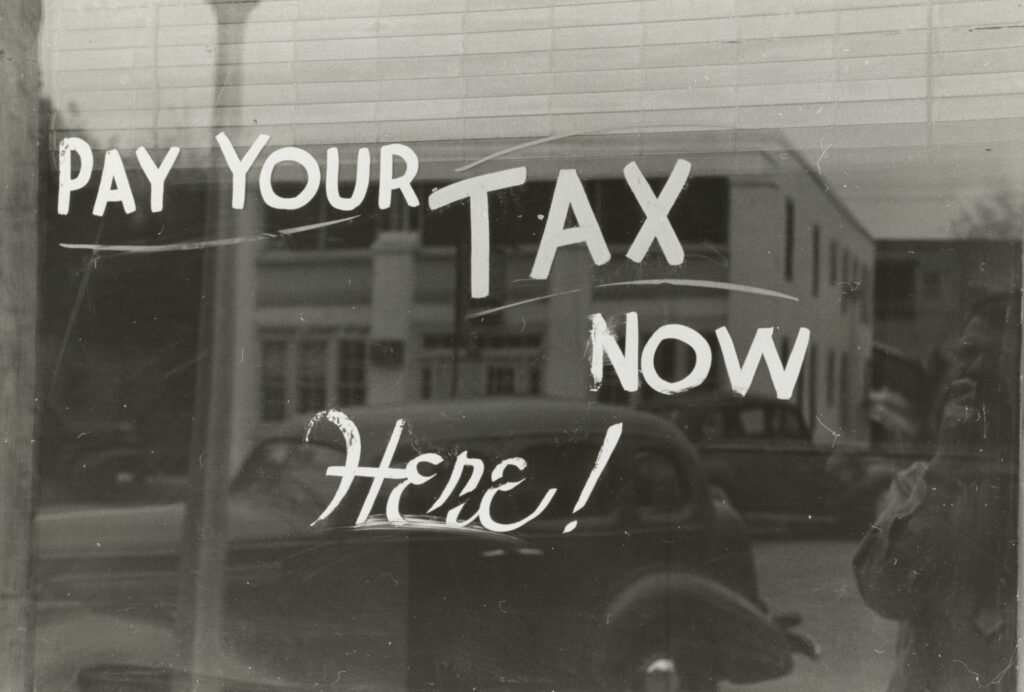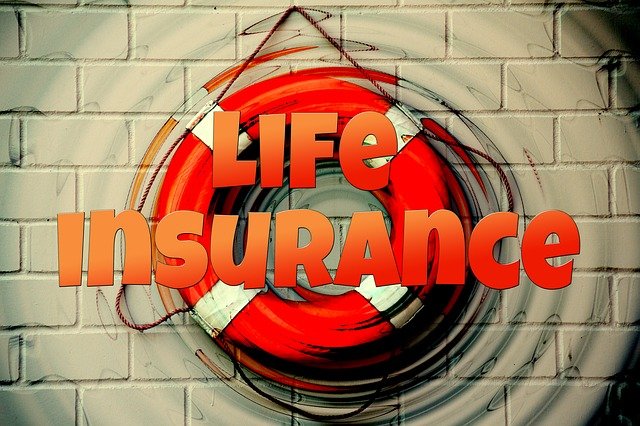In a world filled with so much uncertainty we tend to hold on to everything we feel, or believe, is certain. These points of certainty are what allow us to maintain faith in the world around us and ground us in the belief that our future is known. Unfortunately, in my experience, there are only two things that are certain… death and taxes. So what if there was a tool that could be used during your life to reduce (maybe even eliminate) your taxes AND guard against your death for the rest of your life? Well in this article we are going to discuss how to use permanent life insurance as a means to build cash, use the cash tax free during your life, and ultimately leave the death benefit to the ones you love most.
Permanent Life Insurance vs Term Insurance
In order to understand the value of permanent life insurance we need to dispel an adage that has been floating around the internet for decades. I am sure you have probably heard someone say “buy term and invest the difference”. If not then let me expound upon it.
The phrase “buy term and invest the difference” was coined from a group of financial professionals who believed that life insurance was a means to protect your life during your most vulnerable years (i.e. raising kids, early years of marriage, or holding large debt). Therefore, it only made sense to pay as little as possible for as long as possible. In another article I gave an example of purchasing $1,000,000 of term insurance in my early 40’s, for 30 years, could cost me $1,100 to $2,500 per year depending on my insurability. This expense would be akin to renting a house for 30 years. At the end of that period I would no longer have the policy and I would have spent $33,000 to $75,000 over that time. As a point of comparison, depending on how I designed the permanent life insurance policy I might have contributed $3,000 to $5,000 a year, or $90,000 to $150,000 over the same 30 year period, into a permanent life insurance policy. The difference in premiums is usually the portion that accrues cash value within the permanent life insurance policy.
Now depending on your perspective these numbers may appear large, or small, based on your current income and net worth. Regardless of your view the concept of “buy term and invest the difference” implies that you would have invested the difference between $1,100 and $3,000 or $2,500 and $5,000. Had you invested the premium difference in the S&P 500 over the preceding 30 years (Jan 1, 1992 to Dec 31, 2021) you would have received an average CAGR of 10.66%. That means $1,900 per year, or $2,500 per year, would have grown to $412,442 and $542,688, respectively. Those, by anyone’s perspective, are big numbers.
Unfortunately, at the end of 30 years you no longer have the term insurance and after you adjust the growth rate (now 8.10%) for an annual 2.37% inflation rate over the same period of time the numbers drop to $240,819 and $316,868, respectively. Still large numbers in present value terms, but not quite as large. But wait, let’s deduct 1% of the annual return to account for the long term capital gains rate because it is unlikely to think that someone could invest money monthly and not look at their portfolio for 30 years WITHOUT selling a portion or all of their portfolio a few times. I mean who has nerves of steel for that long? Now the values drop to $197,017 and $259,233, respectively.
So while buying term and investing the difference could lead to a sizable portfolio 30 years from now, there almost needs to be a perfect storm of patience, dedication, discipline, and confidence in the strategy. I don’t know about you but after working in the financial services industry for nearly 20 years I can tell you I have yet to meet one person who has been successful at implementing this concept, flawlessly.
Ultimately, permanent insurance, while not as glamorous, offers a counter argument to the risk and volatility that comes with the ideology of “buy term and invest the difference”. While growth rates will never be similar to purchasing a comparable index linked investment they provide some certainty, stability, and potential tax free growth – depending on the insurer’s credit worthiness and how you set the policy up.
I should note that viewing permanent life insurance as an investment alternative is not the correct approach. Instead view the permanent life insurance cash value as equity in a home. One day the home/policy is paid up which means you no longer need to make payments unless you choose to access the equity/cash value. In fact, depending on your intentions, you could leverage the cash value for short term income projects and pay the loan from the policy off. Then simply rinse and repeat. But more on that in a moment…
What Is Permanent Life Insurance?
I reviewed term insurance in another article so it only seems fair to explain what permanent life insurance is, and is not. To accomplish this it is important for you to understand that permanent life insurance is not an investment vehicle, although it can be treated like one. You still need to have an insurable interest and the amount of coverage is directly related to your net worth and income. That said, for many high income earners like entrepreneurs and executives there are types of permanent life insurance that can be used to grow and protect their personal wealth.
So what is permanent life insurance and why should you care? I attempted to allude to the answer in the previous section but in case I wasn’t clear let me set the record straight. Permanent life insurance was designed by insurance companies as a means to insure against the loss of someone’s life at every point during their life. This is contrary to the buy term and invest the difference thought process. Instead, this type of insurance is designed to be in-force when you are in your 80’s and 90’s when the cost of insurance is usually astronomical. To help offset the massive cost of insurance late in life the insurance companies will use their internal, and proprietary, underwriting standards along with their client mortality rates to determine a fair cost of insurance. They add a minimum amount on top of the cost of insurance to arrive at the annual premium. Their goal is for the cash value, plus growth, to accumulate over time to ensure there is enough money in the policy such that the policy remains in-force until age 120.
But how does permanent life insurance work? I am glad you asked the question!
Previously I noted that there were multiple types of permanent life insurance and that permanent life insurance premiums were comprised of the cost of insurance plus an added amount on top. The actual amounts above the cost of insurance usually varies between insurers and the different types of life insurance policies. Since I cannot pinpoint one example without calling out an individual issuer I will provide some general highlights. To do this I need to break permanent insurance into two categories: whole life insurance and universal life insurance.
If the world of life insurance stems from either being classified as term insurance or permanent insurance then in the sub-world of permanent insurance there are two primary sub-categories, whole life and universal life. There are splintered derivations of each, and even hybrid policies that contain a term insurance component, but for the purposes of this article we will keep things simple. Basically it’s one big swirling pot of confusion if you are new to this world. Therefore, in the spirit of keeping things simple let’s focus on whole life and universal life.
- How Whole Life Insurance Works… (basic example)
- Whole life insurance is type of life insurance that is typically issued by a mutual life insurance company. This is a company that is owned by the policyholders. It collects the premiums of the policyholders, invests them, and uses the profits to fund the operations of the business. Should profits exceed target expectations profits are usually, but not always, returned to the policyholders in the form of dividends or a reduction in premiums.
- In my opinion, this policy is probably the most easy to understand. You make a premium contribution into a policy. A portion of the premium is deducted to pay for the costs associated with the policy. The insurer pays a non-guaranteed dividend on the remaining balance based on current and historic profitability. The remaining amount is left to grow. You have access to this cash value.
- Depending on how the policy is constructed premiums can end after a period of time or can go on for as long as someone remains alive. The amount of premium will depend on the length premiums are contributed.
- The cash value can be used to purchase additional, paid-up, life insurance that is ON-TOP of the original base amount. This means you could have more coverage at the end of life than where you initially started.
- Finally, you can choose to withdraw or borrow funds from the cash value. If you withdraw funds you will realize an imputed gain on the portion of the withdrawal. This gain will be taxable to you. Alternatively, you could borrow funds from your policy and pay yourself back over time. Think of this like you are acting as your own bank. The loan you take is charged an annual interest rate while at the same time the underlying cash value is also earning an interest rate. In some cases the spread (difference between what is charged and what is received) could be slightly positive or negative. Essentially borrowing from yourself to fund/invest in another project at a more competitive interest rate could be better than borrowing from the bank. For example, how much could you save if you borrowed from your policy, rather than a bank, to purchase a car and then pay yourself back with money payments over three (3) years?
- How Universal Life Insurance Works… (basic example)
- Universal life insurance is a type of life insurance that can be issued by any insurance company. These policies are usually categorized into two areas: fixed and variable – although in the last decade we have seen a hybrid concept become more prominent called indexed universal life insurance.
- Fixed universal life insurance is conceptually similar to whole life but the policies are constructed different. For example, instead of paying a dividend the insurer pays a fixed interest rate based on the company’s profitability. Additionally, they do not have to return premiums to policyholders. Their costs are usually linked to the cost of insurance, additional riders, and opportunity cost.
- Variable universal life insurance is very different to whole life. Where whole life and universal life try to maintain stability in cash value, variable universal life seeks to invest the underlying cash value in what are called “sub-accounts”; which are conceptually similar to mutual funds but used only for life insurance. The costs are comprised of the cost of insurance, additional riders, and the investment fees associated with the underlying investments. Unfortunately, the total fees associated with this policy can be fairly steep and cut into the total return.
- As noted earlier, indexed universal life insurance can be considered a hybrid of the fixed and variable universal life insurance. However, unlike the variable policy’s underlying cash value potentially fluctuating positive or negative the indexed universal life policy’s cash value typically remains stable – similar to the fixed universal life policy – and it is only the return earned that will fluctuate. Although this means if there is a floor on the bottom there is also a ceiling on the top. In other words, you will sacrifice some upside potential for the ability to maintain principle protection.
- It is important to note, indexed universal life policies are not invested in sub-accounts, mutual funds, or indices. Rather, the performance of the cash value is linked to one, or more, assigned indices and it is the performance of those indices (within the predefined caps) that determines the underlying cash value’s return. For example, if your cash value is linked to the performance of the S&P 500 then your cash value return will be linked to that index’s performance. If the index return is negative, you typically do not lose money (dependent on the insurer’s contract). If the index’s performance skyrockets up 20% you will participate in the upside but will be capped in how much upside you can participate in. If the cap was 11% then you would benefit from the first 11% but forgo the remaining 9%.
- Regardless of which policy you are speaking about the fundamentals are the same. You make a premium contribution, a portion is deducted associated with the fees to operate the insurance policy, and the rest is able to earn either a fixed or variable return.
- Finally, nearly identical to the whole life policy, you can choose to withdraw or borrow funds from the cash value. If you withdraw funds you will realize an imputed gain on the portion of the withdrawal. This gain will be taxable to you. Alternatively, you could borrow funds from your policy and pay yourself back over time. Think of this like you are acting as your own bank. Some people have been known to call this “Infinite Banking”.
Hopefully by now you can start to see how the wealthy use life insurance to build and leverage their net worth in a tax-advantaged way. In fact, if you use the loan method mentioned above you will never pay taxes on the money borrowed. Between the growth being tax-deferred and the borrowed amounts being tax free this could be a massive opportunity.
But wait there’s more! What if you could use the cash value as a tax free retirement income stream AND not have to pay it back until you die??
How To Use Permanent Life Insurance For Retirement
Retirement means different things to different people. Some want to travel, some want to spend time with family, and others want to give back or donate their time and money to those in need. Regardless of your perspective you will need income to fund your retirement goals thus building diverse income streams is critical.
Successful entrepreneurs and executives look to generate multiple income streams from places like their investments, retirement plans, possibly real estate, and permanent life insurance. But how?
Real estate is fairly straightforward in that you use a combination of free cash flow and leverage to fund that income stream. Whereas the other accounts usually require systematic distributions. Unfortunately, depending on your investment and distribution strategy, taking money from volatile investments can be difficult when the market experiences large price drops.
This is where the stability of permanent life insurance like whole life and fixed, or indexed, universal life can create some much needed certainty. In many cases, as you approach retirement you can ask your insurance provider to generate a projection of level retirement income based on current cash value. In doing so the provider will tell you how much you can borrow annually from your life insurance WITHOUT lapsing the policy before age 100.
Essentially the insurance company is telling you “Mr. X based on your contributions, growth, and projected future dividends/interest/growth we believe you can borrow $$$ from your policy until age YYYY.” But that’s not all!!
Unlike previous examples were I mentioned you needed to payback the borrowed money, in this scenario you DO NOT need to pay back the borrowed funds (as long as their projections are correct). Wait… if you don’t have to payback the money then how does the insurance company receive their money? Simple… they subtract the final amount owed from the available death benefit upon death. This way you leveraged the policy to collect tax free income, you didn’t have to payback the loans, they received the loan amount back from the death benefit, and if there is any money left over that goes to your heirs.
I should note one more thing. Should your loans accumulate to more than the cash value in your policy your policy will implode. No it won’t actually blow up, no need to duck and cover, but the policy will lapse. If a policy lapses then all the deferred gains borrowed over the prior years will become taxable to you in the year the policy lapses. Therefore, the only way to prevent a lapse would be to start funding the policy again – potentially at a time when you do not have the available cash.
So is whole life or universal life insurance a bad investment? Well, remember they are not an investment in the strictest sense. But based on what was just explained and how they can be used to fund goals they may be loosely thought of as an investment. As for whether they are bad, that is dependent on how you construct them with the insurance company, how you decide to fund them over time, AND whether you use the cash value for anything more than a place to save money. Considering everything I have shared, I will let you decide if permanent life insurance is appropriate for you.
Conclusion
I did not intend for this article to become a novella but hopefully you have a better understand of permanent life insurance and how it may benefit you. Many of our most successful entrepreneurs and executives use these types of life insurance for the reasons mentioned above; however they are not for everyone. At no point should you consider the information contained in this article to be gospel. I am merely attempting to offer another point of view and help you think about life insurance in a new way. While buying term and investing the difference may benefit some, permanent life insurance benefits others in ways not afforded to those with just term life insurance. If you would like to learn more or understand how you could leverage permanent life insurance in your executive financial plan we encourage you to reach out to our team at C-Suite Planning™!
The material contained in this article was created for educational and informational purposes only and is not intended to provide specific recommendations, tax, or legal advice. The author, and the author’s firm, strongly encourages you to speak with a qualified professional before taking action on anything mentioned in this article.





